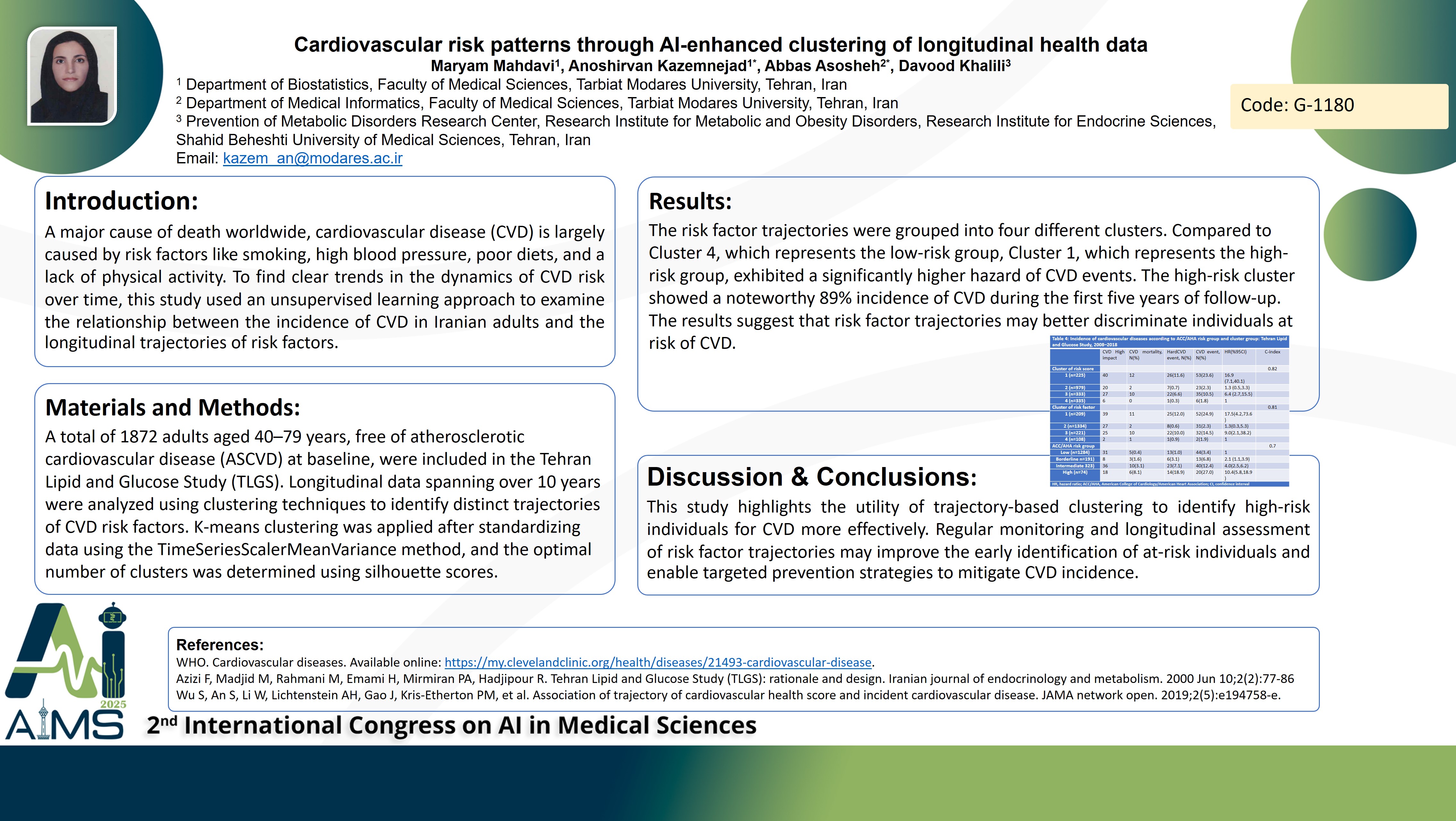الگوهای خطر قلبی عروقی از طریق خوشه بندی داده های سلامت طولی با هوش مصنوعی
کد: G-1180
نویسندگان: Maryam Mahdavi ℗, Anoshirvan Kazemnejad *, Abbas Asosheh, Davood Khalili
زمان بندی: زمان بندی نشده!
برچسب: پردازش سیگنال های پزشکی
دانلود: دانلود پوستر
خلاصه مقاله:
خلاصه مقاله
Objectives: A major cause of death worldwide, cardiovascular disease (CVD) is largely caused by risk factors like smoking, high blood pressure, poor diets, and a lack of physical activity. To find clear trends in the dynamics of CVD risk over time, this study used an unsupervised learning approach to examine the relationship between the incidence of CVD in Iranian adults and the longitudinal trajectories of risk factors. Methods: A total of 1872 adults aged 40–79 years, free of atherosclerotic cardiovascular disease (ASCVD) at baseline, were included in the Tehran Lipid and Glucose Study (TLGS). Longitudinal data spanning over 10 years were analyzed using clustering techniques to identify distinct trajectories of CVD risk factors. K-means clustering was applied after standardizing data using the TimeSeriesScalerMeanVariance method, and the optimal number of clusters was determined using silhouette scores. Results: The risk factor trajectories were grouped into four different clusters. Compared to Cluster 4, which represents the low-risk group, Cluster 1, which represents the high-risk group, exhibited a significantly higher hazard of CVD events. The high-risk cluster showed a noteworthy 89% incidence of CVD during the first five years of follow-up. The results suggest that risk factor trajectories may better discriminate individuals at risk of CVD. Conclusions: This study highlights the utility of trajectory-based clustering to identify high-risk individuals for CVD more effectively. Regular monitoring and longitudinal assessment of risk factor trajectories may improve the early identification of at-risk individuals and enable targeted prevention strategies to mitigate CVD incidence.
کلمات کلیدی
ASCVD-Risk-Score, Clustering, Longitudinal Trajectory, Unsupervised Clustering
